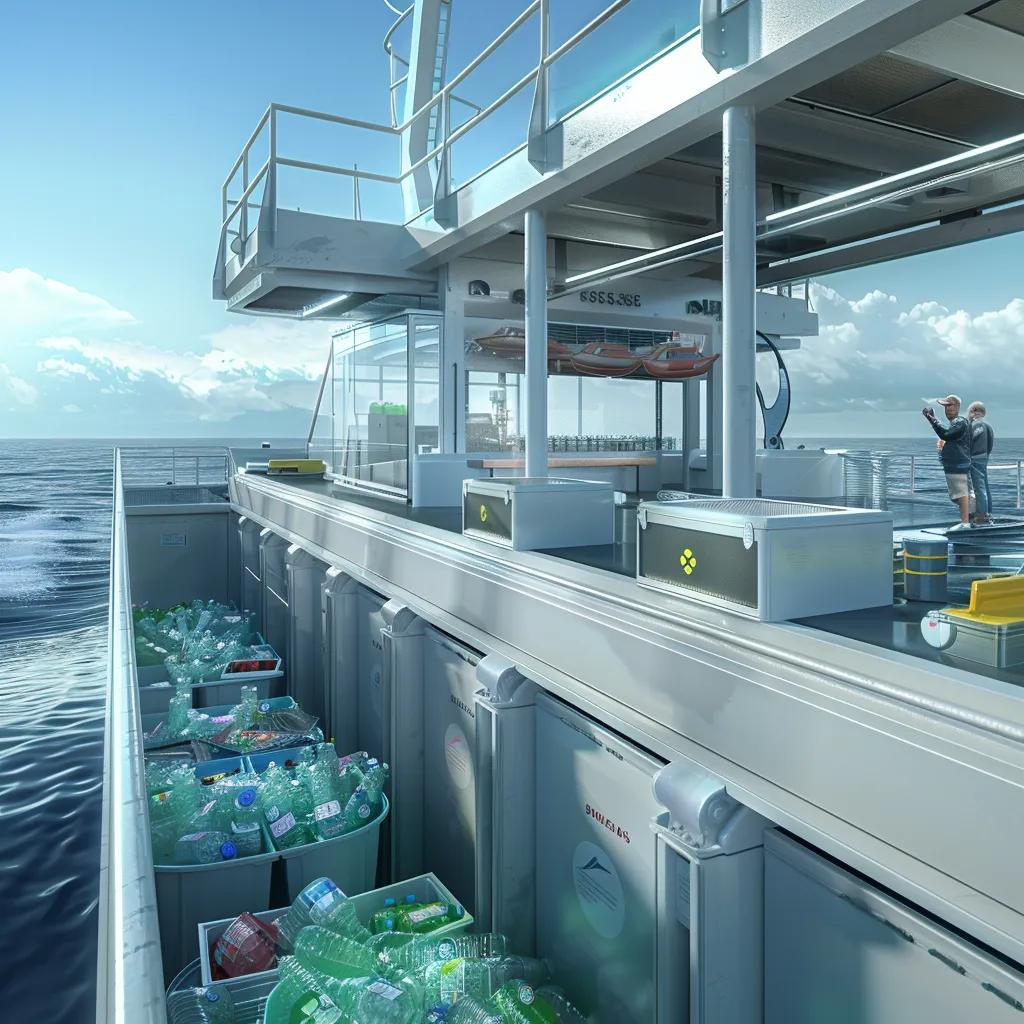Sustainable Tourism in Small Ship Expeditions:
How Responsible Travel Creates Authentic and Eco-Friendly Adventures

Sustainable tourism in small ship expeditions is gaining momentum as eco-conscious explorers increasingly seek journeys that tread lightly on the planet while delivering genuine cultural encounters. Responsible tourism in small ship expeditions offers reduced environmental impact, meaningful community engagement, and unparalleled off-the-beaten-path discovery. In this guide, you will learn:
- What makes small ship cruises greener than mega-liners
- How intimate vessels uplift local economies and preserve heritage
- Which unique expedition experiences only small ships can unlock
- The world’s leading eco-conscious destinations by region
- Key criteria and certifications for selecting a truly responsible voyage
- Tangible environmental advantages and conservation partnerships
- How OTBT Travel weaves sustainability into every personalized adventure
By the end, you’ll understand how small ship travel fosters authentic connections and eco-friendly practices—and how OTBT Travel guides you toward a meaningful voyage that aligns with your values.
What Are Small Ship Expeditions and Why Are They More Sustainable Than Large Cruises?
Small ship expeditions are voyages aboard vessels carrying fewer than 200 passengers, designed to access remote harbors with minimal ecological disturbance. They reduce responsible tourism in small ship expeditions’ carbon footprint, avoid overcrowding in fragile ports, and prioritize local sourcing.
Compared to large cruises, small ships integrate specialized sustainable practices and cultivate authentic community relations. This vessel scale fosters environmental stewardship and immersive experiences without mass-tourism drawbacks.
How Do Small Ships Reduce Carbon Emissions Compared to Large Vessels?
Small ships reduce carbon emissions by operating more efficient engines, limiting onboard energy demand, and visiting less congested routes. Modern designs often feature:
- Hybrid propulsion systems that switch between diesel and electric power
- Optimized hull shapes (e.g., X-BOW design) to lower drag
- Slow steaming techniques that cut fuel consumption by up to 25%
Each measure directly curbs greenhouse gases, making small ship travel a more climate-friendly alternative to larger fleets.
Small Ship Expeditions and Carbon Emissions
Small ship expeditions reduce carbon emissions through the use of more efficient engines, limiting onboard energy demand, and visiting less congested routes. Modern designs often feature hybrid propulsion systems, optimized hull shapes, and slow steaming techniques, all of which contribute to a lower carbon footprint.
This research supports the article’s claims about the environmental benefits of small ship expeditions by highlighting the importance of reducing greenhouse gas emissions in the maritime industry.
What Eco-Friendly Waste Management Practices Do Small Ships Use?

Efficient waste stream separation and treatment systems define small ship eco-practices. Typical measures include:
- Onboard recycling stations for paper, glass, and metals
- Advanced wastewater treatment units that meet or exceed discharge standards
- Composting organic galley waste and sourcing biodegradable amenities
By embedding closed-loop waste processes, vessels preserve marine ecosystems and reduce reliance on single-use plastics.
How Does Sustainable Ship Design Enhance Environmental Conservation?
Sustainable ship design integrates energy efficiency and minimal habitat disruption:
| Entity | Attribute | Value |
|---|---|---|
| X-BOW Hull | Drag Reduction | Up to 15% lower fuel use |
| Hybrid Propulsion | Emission Control | 30–50% carbon output reduction |
| LED Lighting | Energy Consumption | 80% less electricity than incandescent |
| Wastewater System | Treatment Standard | Exceeds MARPOL Annex IV requirements |
Such design choices ensure that each expedition conserves fuel, protects marine life, and minimizes waste discharge.
Which Technologies Support Greener Small Ship Expeditions?
Small ships leverage emerging green technologies to reduce ecological impact:
- Biofuel Blends that cut sulfur emissions and particulates
- Solar-assisted Power installations for onboard lighting and systems
- Ballast Water Treatment units preventing invasive species transfer
- Smart Energy Management software to optimize power distribution
- Exhaust Scrubbers removing up to 98% of sulfur oxides
These solutions collectively lower carbon footprints and safeguard ocean health, setting responsible tourism in small ship expeditions apart from larger cruise operations.
Why Are Small Ship Expeditions a Greener Choice Over Large Cruises?
By docking in underserved ports and partnering with regional artisans, small ship expeditions channel tourism revenue directly to local economies. Travelers enjoy authentic interactions that respect cultural heritage and foster mutual understanding.
This approach contrasts with mainstream cruise tourism by connecting guests with community-run lodges, family-owned restaurants, and indigenous guides, ensuring tourism supports—not supplants—local ways of life.
In What Ways Do Small Ships Benefit Local Economies Through Responsible Tourism?
Small ship cruises inject funds into small businesses and service providers through:
- Charters of locally owned tenders and transportation services
- Procurement of regional produce, seafood, and handicrafts
- Guided shore excursions led by certified community guides
- Port fees directed to municipal conservation and infrastructure
These direct expenditures empower communities and preserve livelihoods, ensuring that tourism revenue circulates where it matters most.
Community Engagement and Local Economies
Small ship expeditions support local communities by injecting funds into small businesses and service providers. This includes the charter of locally owned transportation, procurement of regional produce, and guided shore excursions led by community guides. These direct expenditures empower communities and preserve livelihoods.
This citation reinforces the article’s discussion on how small ship cruises benefit local economies through responsible tourism practices.
How Do Travelers Experience Authentic Cultural Immersion on Small Ship Cruises?

Guests engage with living traditions through curated experiences such as:
- Home-hosted cooking workshops highlighting regional cuisines
- Folk music performances organized by neighborhood cultural centers
- Artisan studio visits demonstrating traditional crafts
- Visits to community-run conservation projects and educational programs
By centering local expertise, small ships foster respectful cultural exchange while deepening travelers’ understanding of each destination.
Why Is Reduced Overcrowding Important for Ethical Tourism Practices?
Reduced overcrowding preserves the integrity of natural and cultural sites. When small ships bypass overcrowded marinas, they:
- Prevent shoreline erosion and habitat degradation
- Maintain visitor quality of experience and community comfort
- Allow conservation agencies to manage tourism sustainably
This balance ensures that both travelers and locals share durable, respectful interactions.
How Are Ethical Tourism Guidelines Implemented on Small Ship Expeditions?
Responsible expedition operators adopt clear codes of conduct that cover:
- Wildlife observation distances and noise minimization
- Plastic-free shore excursions with reusable gear
- Respect for sacred sites and cultural protocols
- Participation in leave-no-trace coastal cleanups
Such guidelines align traveler behavior with the goals of heritage preservation and environmental stewardship.
What Unique Expedition Experiences Do Sustainable Small Ship Cruises Offer?
Small ship expeditions unlock hidden harbors and remote enclaves unreachable by larger vessels, presenting encounters shaped by pristine landscapes and unspoiled wildlife habitats. Expert naturalists and cultural specialists accompany each voyage, illuminating local ecosystems and traditions.
Which Remote Destinations Are Accessible Only by Small Ship Expeditions?
Small ships reach sheltered fjords, hidden coves, and minor archipelagos such as:
- The Faroe Islands’ untouched inlets
- Coastal villages in the West African Bijagós Archipelago
- Remote atolls in French Polynesia
- Lesser-visited ports of the Greek Ionian Islands
- Ice-edge passages in the Canadian Arctic
These itineraries reveal unspoiled locales where authentic experiences flourish beyond mainstream routes.
How Do Expert-Led Enrichment Programs Enhance Traveler Understanding?
Onboard enrichment brings subject-matter authorities directly to guests:
- Marine biologists delivering lectures on local ecosystems
- Cultural anthropologists sharing indigenous folklore
- Conservation specialists guiding citizen-science beach surveys
- Photographers teaching wildlife documentary techniques
Such programs deepen engagement and inspire travelers to support ongoing conservation efforts.
What Personalized Services and Intimacy Do Small Ships Provide?
Small ships tailor every detail through:
- Guest-profiling for customized shore activities
- Flexible embarkation times and small-group Zodiac landings
- High staff-to-guest ratios ensuring personalized attention
- Onboard amenities reflecting local craftsmanship
This level of service cultivates a family-style atmosphere where each guest feels valued.
How Can Travelers Engage in Active Exploration Activities?
Intrepid guests can pursue active adventures such as:
- Kayaking beneath coastal cliffs and iceberg floes
- Guided hikes through endemic flora zones
- Zodiac photo safaris tracking marine mammals
- Camping under the midnight sun in remote coves
These dynamic pursuits connect travelers directly with the landscapes they visit and anchor lasting memories.
Which Destinations Are Known for Sustainable Small Ship Expeditions?
The world’s most responsible small ship itineraries highlight areas with strong conservation partnerships, strict regulatory standards, and engaged local communities. From equatorial biodiversity hotspots to polar biodiversity corridors, these voyages set benchmarks in eco-tourism.
What Makes Galapagos Cruises Exemplary in Sustainable Tourism?
Galapagos expeditions operate under stringent regulations enforced by the Galapagos National Park Directorate. Key features include:
- Mandatory use of certified naturalist guides
- Locally sourced provisioning to reduce import emissions
- Contributions to endemic species research and habitat restoration
- Enforcement of visitor quotas to safeguard fragile ecosystems
Sustainable Tourism in the Galapagos
Galapagos expeditions operate under stringent regulations enforced by the Galapagos National Park Directorate. Key features include the mandatory use of certified naturalist guides, locally sourced provisioning, contributions to endemic species research, and enforcement of visitor quotas to safeguard fragile ecosystems.
This source provides specific examples of how the Galapagos Islands are managed to ensure sustainable tourism practices, which aligns with the article’s focus on eco-conscious destinations.
How Are Antarctic Expeditions Conducted Responsibly and Sustainably?
Antarctic voyages follow IAATO guidelines mandating:
| Entity | Attribute | Value |
|---|---|---|
| Landing Codes | Visitor Limits | Max 100 passengers per site |
| Waste Management | Zero Discharge Protocol | All effluent stored and removed |
| Wildlife Approach | Minimum Distance | 5-meter buffer for penguin colonies |
| Environmental Briefs | Mandatory Training | Pre-landing briefings on minimal impact |
This compliance framework preserves Antarctica’s pristine landscapes and wildlife.
What Are the Features of Arctic Responsible Voyages?
AECO standards guide Arctic journeys with requirements for:
- Fuel quality control and emissions monitoring
- Partnership with Inuit communities for cultural authenticity
- Support for polar bear and seabird monitoring programs
- Compliance with strict waste-removal and ballast-treatment policies
These protocols ensure Arctic expeditions protect both environment and heritage.
Which Other Eco-Conscious Destinations Are Popular for Small Ship Travel?
Beyond polar realms, small ship ecotours flourish in:
- The Greek Ionian & Dodecanese Islands with community homestays
- West Africa’s mangrove-lined coasts promoting mangrove reforestation
- The Pacific’s remote atolls focusing on reef conservation
- Southeast Asia’s lesser-known river deltas championing village-based tourism
Each region pairs unique culture with sustainable practices to enrich travel experiences.
How Can Travelers Choose the Most Responsible Small Ship Expedition?
Selecting an eco-conscious voyage involves assessing vessel practices, community impact, and operator transparency. Travelers should scrutinize sustainability credentials and inquire about onshore partnerships before booking.
What Key Questions Should You Ask About Sustainability Practices?
When evaluating expedition operators, ask:
- Which fuel types and energy systems power your vessels?
- How do you manage onboard waste and wastewater?
- What percentage of provisioning is sourced locally?
- How do you engage and compensate community partners?
- Do you track and report carbon emissions per voyage?
These queries reveal the operator’s commitment to environmental and social responsibility.
Which Certifications and Associations Ensure Responsible Expedition Operators?
Credible credentials include:
Affiliation with these bodies indicates rigorous third-party oversight and adherence to best practices.
How Does OTBT Travel Demonstrate Its Commitment to Sustainable Small Ship Travel?
At OTBT Travel, we embed sustainability into every expedition through:
- Partnerships with local NGOs in the Galapagos, Arctic, and around the world.
- Exclusive use of vessels featuring hybrid propulsion and advanced waste treatment
- Curated itineraries that balance adventure with cultural respect
These initiatives ensure that your voyage supports conservation and local prosperity.
What Are the Environmental Advantages of Small Ship Expeditions?
Small ship expeditions deliver measurable ecological benefits by minimizing resource consumption and supporting targeted conservation programs. These voyages exemplify how tourism can be a force for environmental protection when managed responsibly.
How Do Small Ships Minimize Their Carbon Footprint?
Small vessels achieve lower emissions through:
- Engineering optimized for slow-speed efficiency
- Onboard renewable energy integrations such as solar panels
- Use of low-sulfur and biofuel blends
- Route planning software that reduces unnecessary mileage
Together, these practices significantly reduce greenhouse gas output versus traditional cruise liners.
What Marine Conservation Efforts Are Supported by Small Ship Operators?
Many small ship companies channel expedition fees into:
- Coral reef restoration and monitoring initiatives
- Marine mammal tagging and research projects
- Beach cleanups and plastics removal campaigns
- Citizen-science surveys tracking biodiversity changes
These collaborations bolster scientific knowledge and foster community ownership of conservation goals.
How Is Advanced Wastewater Treatment Implemented on Small Ships?
State-of-the-art treatment systems onboard include:
| Entity | Attribute | Value |
|---|---|---|
| Membrane Bioreactors (MBR) | Removal Efficiency | 98% of organic contaminants eliminated |
| UV Sterilization | Pathogen Inactivation | Over 99.9% virus and bacterial deactivation |
| Sludge Dewatering Units | Volume Reduction | Up to 75% less sludge for shore disposal |
| Continuous Monitoring | Real-Time Compliance | Automated sensors ensure discharge standards |
By treating effluent to near-potable standards, small ships uphold clean-water integrity for delicate marine habitats.
What Are Common Questions About Responsible Tourism in Small Ship Expeditions?
Travelers often seek clarity on sustainability claims, community benefits, and environmental comparisons. Addressing these concerns equips you to make informed, responsible choices without compromising adventure.
What Makes a Small Ship Expedition Truly Sustainable?
Small ship expeditions combine efficient vessel design, green technologies, and community partnerships to lower emissions, preserve natural sites, and uplift local economies.
How Do Small Ship Cruises Benefit Local Communities?
These cruises funnel tourism revenue into local businesses, incorporate community-led experiences, and support cultural and environmental projects that reinforce social resilience.
Are Small Ship Cruises Better for the Environment Than Large Cruises?
By operating with fewer passengers, optimized fuel systems, and strict waste protocols, small ships generate significantly lower per-guest carbon footprints and minimize harmful ecological impacts.
How Can Travelers Participate in Conservation During Expeditions?
Passengers can join onboard citizen-science programs, contribute to beach cleanups, assist with wildlife monitoring, and support community education workshops—turning exploration into purposeful action.
Why Choose OTBT Travel for Your Sustainable Small Ship Expedition?
OTBT Travel specialises in crafting off-the-beaten-path voyages that honour the planet and local cultures. Each itinerary is designed to exceed sustainability benchmarks while delivering immersive, expertly guided adventures.
What Unique Value Does OTBT Travel Offer in Responsible Small Ship Travel?
Our exclusive advantages include:
- Handpicked small vessels with industry-leading green technology
- Expert naturalists and cultural specialists on every voyage
- Customised shore activities developed in collaboration with local partners
- Transparent impact reporting showcasing environmental and social metrics
These features ensure your journey is both transformative and responsible.
How Does OTBT Travel Ensure Personalised Service and Authentic Exploration?
We maintain intimate group sizes and high staff-to-guest ratios, allowing each traveller to:
- Co-design shore excursions aligned with personal interests
- Interact directly with community leaders and artisans
- Receive 24/7 concierge support tailored to cultural curricula
- Access hidden harbours for undisturbed wildlife viewing
This model delivers genuine connections and seamless experiences.
Written by Richard M. is the founder of Off The Beaten Track Travel, based on the Gold Coast, Queensland. With over 20 years of experience crafting small-group, luxury travel experiences across Australia and beyond, Richard is part of the global Virtuoso network, delivering journeys that are immersive, personal, and truly off the beaten track. Explore his story.
